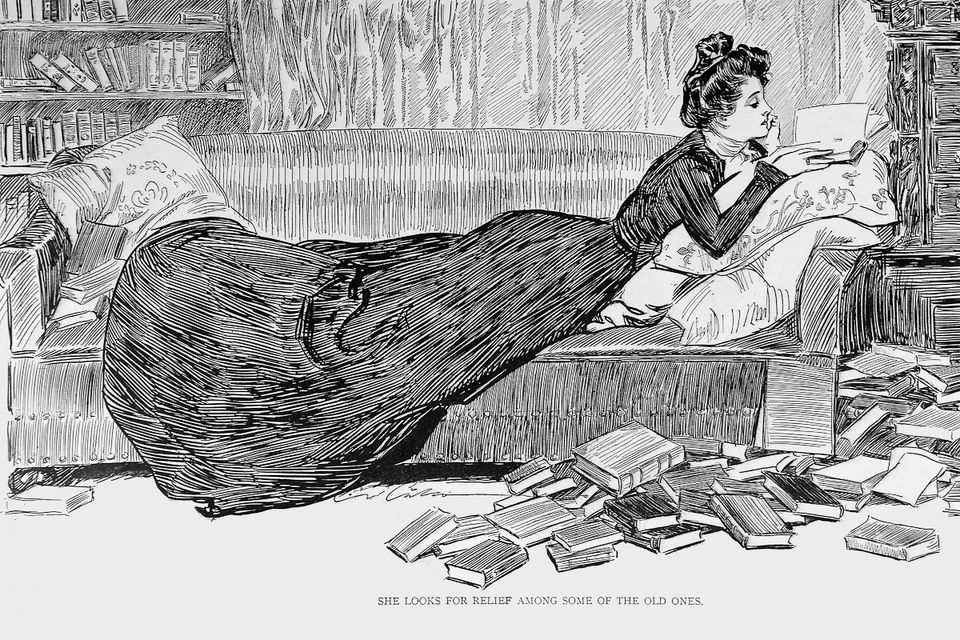Dr Essai’s life checklists: No. 1, Reading Strategies

Dr Essai favors checklists. They combine the mnemonic utility of bolstering the memory in its 70th year with the affirmation that comes from checking off a task accomplished. Check! Check! Oh, whew, almost forgot that one…check!
Surgeons and physicians have embraced the quality assurance and error avoidance of a smart checklist. Why not the rest of us? Why not checklists for life? asked the doctor. Carpe diem. Here is the first of Dr Essai’s Life Checklists.
Some background: The doctor has been thinking about reading more than usual for the past few months as he scribbles away at an essay whose working title is “Well Unread.” Or perhaps “The Voracious Unreader.” You may remember prior mention of this, as he has been desultory in advancing it toward completion, thinking about it more than writing it. This happens. It has been noted that on occasion he lacks urgency; the doctor abides.
Anyway, out of this rumination has come a checklist on reading strategies. Survey the list and check the one you embrace. Check! There, see? You’ve already achieved something today.
Checklist of Reading Strategies — Check the Strategy That's Best for You!
- [ ] Start reading only books that seem promising or have been assigned by a professor, because once you have reached the bottom of pg. 5 you are duty-bound to read the whole thing. There can be no exceptions. You start it, you finish it, that’s the rule.
- [ ] Read only books that appear on a canonical list of your choosing: The 100 Greatest Books, Books of the Western Canon, 1,000 Books to Read Before You Die, The Great Books, etc. These works must be read in chronological order, each must be read cover to cover (see above), and there will be no skipping of intimidating volumes (War and Peace, Ulysses, Critique of Pure Reason, The Complete James Patterson). Annotate freely with copious marginalia; use a pencil for this, a Blackwood Palomino if available; do not use a fountain pen because the lettering will feather in an unacceptable manner. Upon completion of the canon, reward yourself with a bottle of 12-year-old Islay scotch; Dr Essai recommends Bowmore.
- [ ] Upon first opening a nonfiction book, turn to the index. Begin with the first listing (Abbott, Francis Ellingwood; Aboriginal Australians; abortion; Alfonso X; “Acadian Driftwood”) and read every citation. Then move on to the second item in the index. Proceed in like manner to the last entry (Zionism; Zulu state; Zukor, Adolph; Zurek, W.H.; Zabriskie Point). Variation: Begin with first index entry, then, as you read, note items of interest (make a list!), then look them up in the index and read the new citations. Take copious notes. What you sacrifice in narrative drive you will gain through serendipty.
- [ ] Read across several related texts. No fewer than three, no more than eight. Read from the first book—you are permitted to begin with any volume of your choosing—and read until a question forms in your joggled mind, or an urge to know more than the author promises to offer on a subtopic or person of interest. Secure a second text that promises to quench your thirst for additional knowledge. Then a third. Follow a forking path through multiple works, but always be alert for opportunities to circle back to your starting place. Cease this particular reading project when, for the third time, that you cannot recall what seemed so important last week, last month, whenever you began this quest.
- [ ] Read the first paragraph and the last. If you yearn to know how the writer got from the former to the latter, read the book. Otherwise, divert your attention to a cat video.
- [ ] Read every word of a book aloud. People read this way for centuries before someone figured out that they could read silently. Refrain from this practice when at a bus stop, in a restaurant, or walking down a neighborhood street, or when long-suffering family members are present. Dogs seem to make a good audience; occasionally, glance up at their faces to make sure they are still attentive.
- [ ] Read only on an ocean beach during June, July, or August. This is stupid, but Dr Essai embraces comprehensiveness and over the years he has observed this regrettable practice.
- [ ] Read only essays on books you have been meaning to read for 25 years but never actually do. A sufficient volume of such reading constitutes a half-checkmark for the book itself. The definition of “sufficient” is not easy to pin down; decide for yourself. That is, you do you…you do your best you…however that dumb phrase goes.
- [ ] Select a single issue of The New York Times Book Review, turn to the week’s bestseller list, and read every book on it. If you choose the current fiction list, this will mean reading about a dozen novels by Colleen Hoover. The doctor is not sure what to make of this phenomenon, but he is not moved to sample Ms. Hoover’s oeuvre. There are limits to the curiosity of even The Worlds Most Attentive Man™.
- [ ] Read only books that have been adapted for film. This results in a list of surprising quality, though it will require you to complete The Bridges of Madison County.
- [ ] Read only nonfiction works that are subtitled How [insert variable] Changed the World. Emerge skeptical of this publishers’ marketing strategy. The color mauve changed the world? Seriously? (cf. Simon Garfield)
Happy reading! Check!
Member discussion